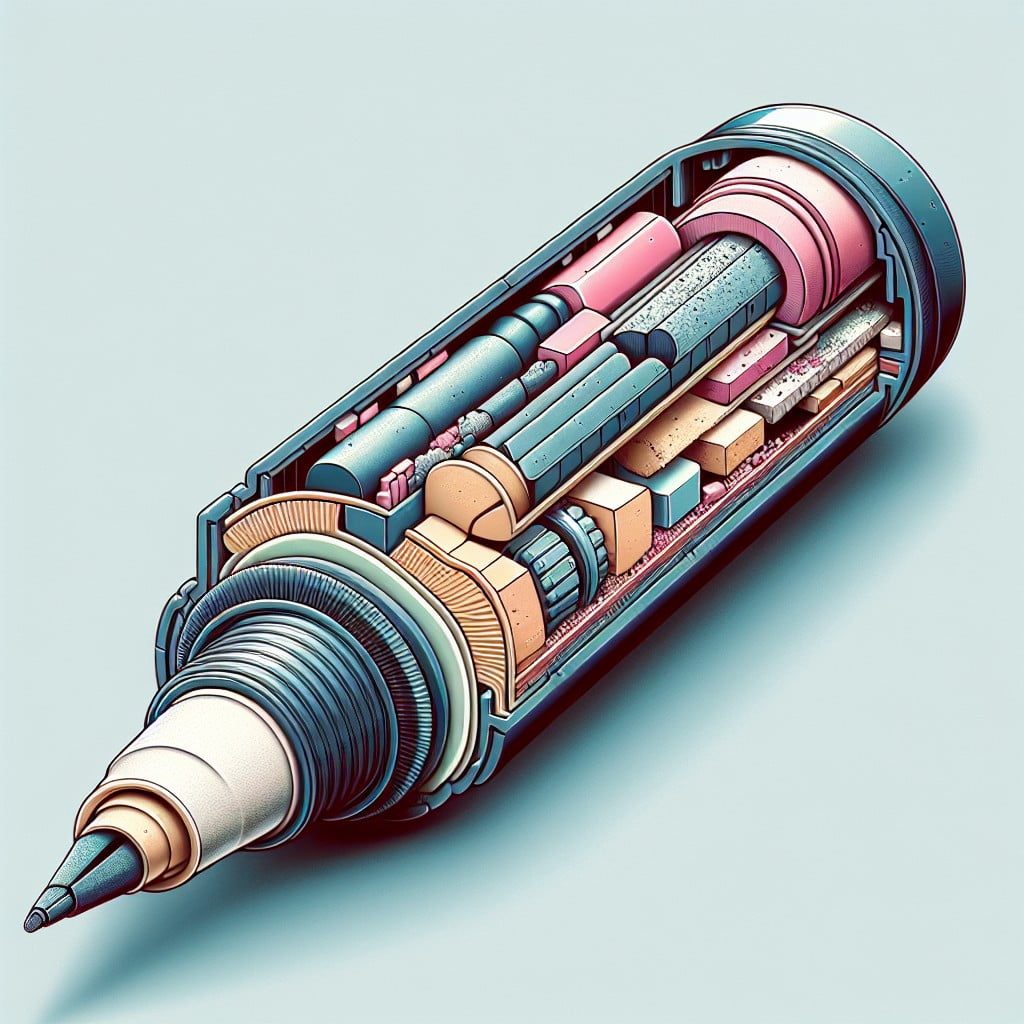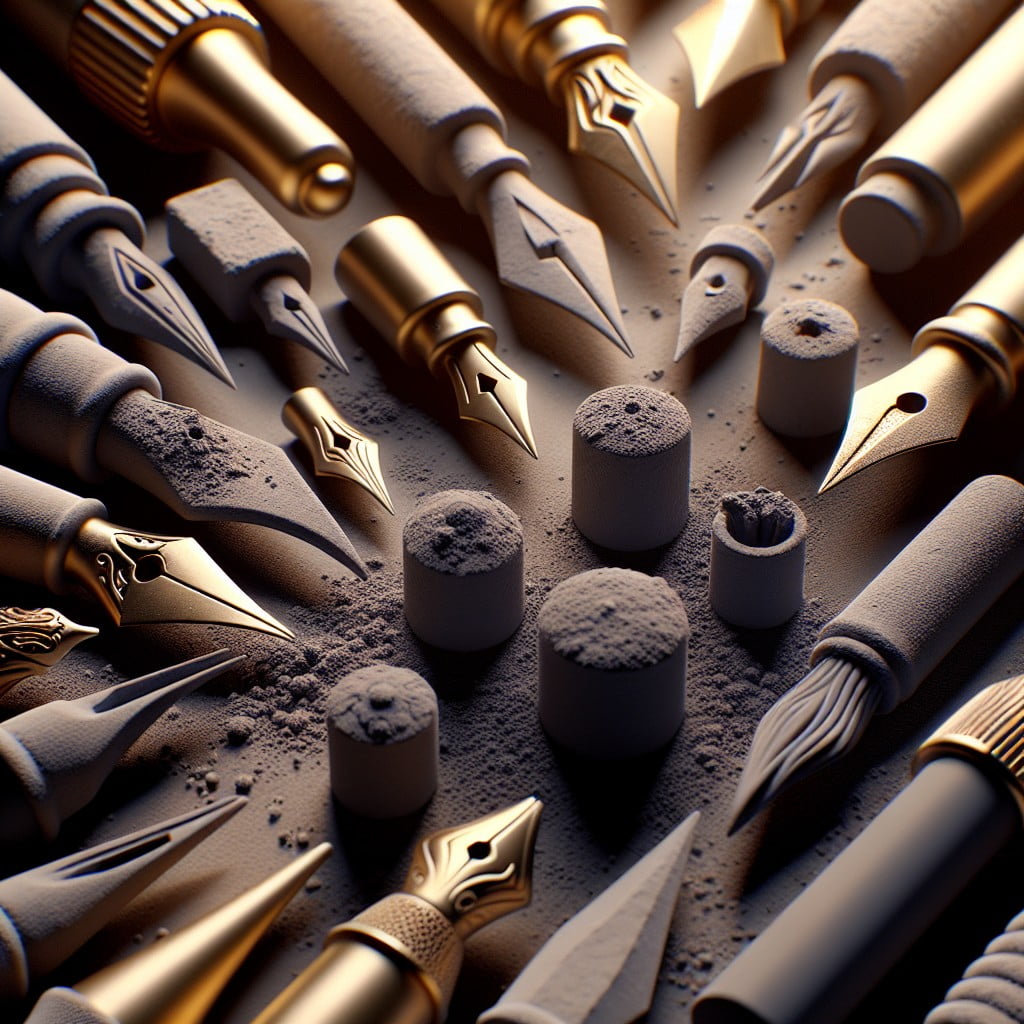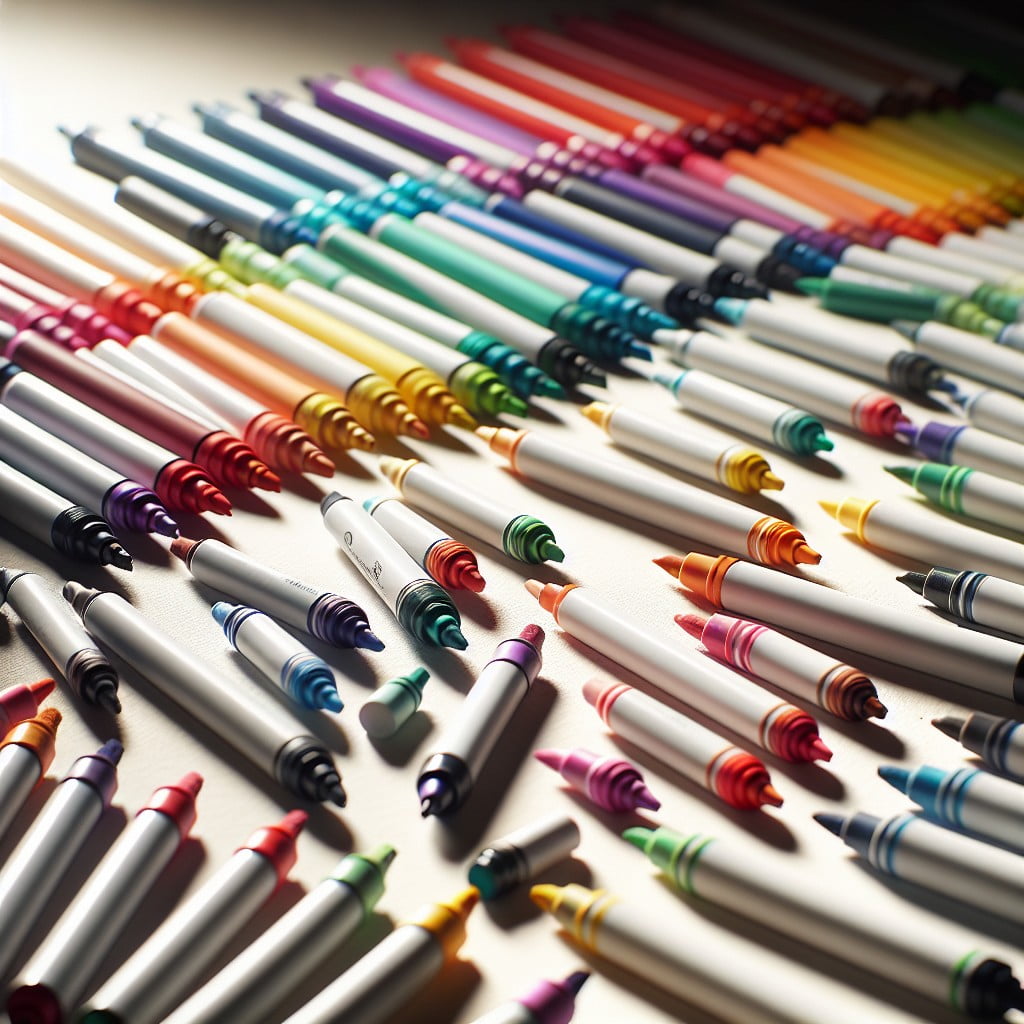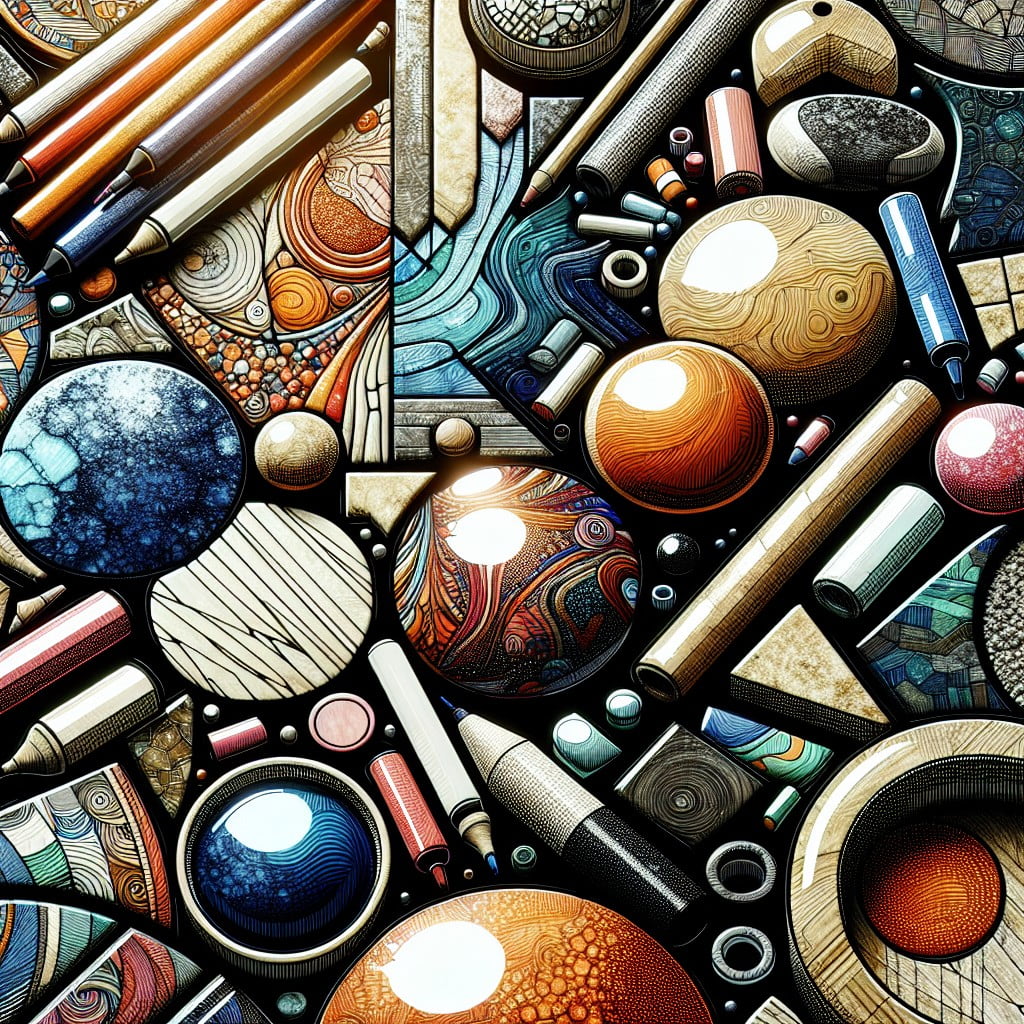Last updated on
Discover why chalk pens are revolutionizing traditional mediums of expression, because they not just enhance creativity but also stand out for their versatility and ease of use.
Key takeaways:
- Chalk pens contain a water-based pigment ink that mimics traditional chalk.
- Chalk pens come with various nib types for different styles and precision.
- Chalk pens offer a wide range of colors for artistic and practical purposes.
- Chalk pens can be used on non-porous surfaces for various applications.
- Tips for using chalk pens include priming, blending colors, and proper storage.
Composition of Chalk Pens

Liquid chalk markers contain a water-based pigment ink, which provides the opaque and vibrant appearance typically associated with chalk. The ink is a combination of a powdered pigment and a liquid base, which allows it to flow smoothly through the pen’s nib. When the ink dries on a non-porous surface, it solidifies to mimic the look of traditional chalk without the dusty residue.
These pens often include a binder, which helps the ink adhere to surfaces until it’s deliberately removed. While some binders are permanent, most formulations in chalk pens are designed to be erasable, making them suitable for temporary markings.
A key ingredient is a small amount of alcohol or another solvent, which ensures a quick-drying effect. This helps to prevent smudging and allows for rapid layering of colors in your design.
Unlike their traditional counterparts, which are primarily made of calcium sulfate (gypsum) or calcium carbonate, chalk pens offer a mess-free alternative. The contained use of these pens means the airborne dust typical of traditional chalk is non-existent, making them a popular choice in environments where cleanliness and allergy sensitivities are a concern.
Types of Nibs for Chalk Pens

Chalk pens come with various nib types, each suited to different styles and precision requirements. Bullet tips, known for their rounded points, deliver a consistent line width, making them ideal for handwriting and detailed work. Chisel tips, with an angled cut, offer versatility, allowing both broad strokes and fine lines depending on the angle of use — perfect for calligraphy and bold lettering. Some pens feature reversible tips, providing both a bullet and chisel option in one, maximizing their utility. Fine tips are best for intricate designs and smaller writing, whereas thick tips are suitable for larger signage and visibility from a distance. It’s important to choose a nib type that matches your project’s needs for an optimal outcome.
Color Varieties in Chalk Markers

One of the joys of using chalk markers is the vast spectrum of colors at your fingertips. From classic white, perfect for crisp, clear lines on any surface, to a rainbow of vibrant hues, these pens can transform ordinary projects into eye-catching displays. You’ll find bright neons for that pop of color, pastels for a more subdued touch, and even metallics that add a touch of shimmer and luxury to any artwork or sign.
With such extensive color options, these pens are ideal for creating themes or coding information visually. Artists and crafters can blend and layer colors for unique effects, while businesses can utilize specific shades to align with their branding during promotions. For educators, an array of colors aids in highlighting key points during lessons or organizing classroom materials.
These markers also often come in sets that cater to various needs—themed color packs allow for a cohesive look and feel, whether you’re decorating for the holidays or styling a chic, minimalist café menu. The possibilities are endless, offering users the chance to bring a personal touch to any project with the stroke of a pen.
Applications and Surfaces for Chalk Pen Usage

Chalk pens are versatile tools suited for both creative and practical uses. Artists often gravitate towards these pens for crafting vibrant and eye-catching signage on non-porous surfaces like glass, mirrors, and laminated paper.
In educational settings, teachers use them for writing on whiteboards and other erasable surfaces to add a splash of color to their presentations. Event planners find chalk pens useful for customizing menu boards, table place card settings, or directional signage that can easily be revised for different occasions.
In the home, these markers serve as a tool for organizing, labeling jars and containers in a pantry with smear-proof precision. Similarly, they’re excellent for calendar management on wall planners, where events can move and change. One can transform an ordinary mirror or window into a familial communication center, jotting down reminders or notes that wipe clean with a damp cloth.
Lastly, in the commercial realm, the pens offer retail merchants a way to create temporary, yet professional-looking displays on store windows and signage that withstand the elements but can be updated without fuss. With the understanding that these markers are best on smooth, non-porous materials, users unlock a wide range of creative and functional applications.
Tips for Using Chalk Pens
To achieve the best results with chalk pens, prime the pen by shaking and then pressing the tip against a surface until the ink flows smoothly. Begin with light pressure to avoid oversaturation and ensure clean lines. Use a ruler or a stencil for straight lines or intricate designs, enhancing the professional look of your work.
For vibrant and lasting markings, apply the ink to a clean, dry surface. If you are working on a porous surface, test a small area first as the ink might be permanent on such materials.
Blend colors while the ink is wet to create unique shades or artistic effects. Be mindful of drying times; once dry, overlaying another color on top without smudging is possible.
Keep caps tightly sealed when not in use to prevent the pens from drying out, thus extending their lifespan. If the tip becomes clogged or dirty, some models allow for the tip to be pulled out and rinsed with water to restore its function. Remember to store the pens horizontally to maintain even ink flow to the tips.
Cleaning and Maintenance for Chalk Pens
Regular upkeep ensures your chalk pens remain in prime condition for extended use. To prevent ink from drying out, always cap the pens tightly after use. Store them horizontally to maintain ink flow and preserve the uniform saturation of color when the pen is applied to surfaces.
Occasionally, nibs can become clogged with dried ink. To solve this, dampen the tip with warm water and gently press onto a scrap piece of paper to rehydrate the ink. For non-porous surfaces, a damp cloth usually removes the ink cleanly. If residue persists, an ammonia-based cleaner can break down stubborn marks without damaging the surface.
Take care to avoid harsh scrubbing which might damage finer nibs. Instead, soak tips in warm water for a few minutes before wiping them clean. As with all artistic tools, the lifespan of chalk pens can be maximized with proper care and handling, ensuring reliable performance and vibrant displays for all your creative projects.
Advantages of Using Liquid Chalk Markers
Liquid chalk markers offer vivid colors and a dust-free experience, making them a popular choice for both professional and personal use.
Unlike traditional chalk, they don’t break easily and provide a smooth, consistent line that can enhance legibility and artistic detail.
Because they dry quickly, they reduce smudging, ensuring that your message or artwork stays intact.
These markers are also versatile, working well on non-porous surfaces such as glass, mirrors, and whiteboards, which broadens their potential applications.
Additionally, most are water-based, making them easy to wipe off with a damp cloth and re-use the surface without the need for harsh chemical cleaners.
The convenience of replaceable tips extends the life of the markers, providing further value and eco-friendliness.
Safety and Non-toxicity of Chalk Pens
Chalk pens often contain a water-based ink, making them an ideal choice for use by people of all ages, including children. The non-toxic nature of these pens is a significant advantage for parents and educators looking for safe drawing and writing options. When selecting chalk pens, it’s advisable to check for certifications or labels indicating non-toxicity, such as AP Certification or conformity with ASTM D-4236 standards, which assure that the product is safe for use in art materials.
Furthermore, many liquid chalk markers use a dustless formula, reducing the risk of respiratory issues commonly associated with traditional chalk dust. This feature is especially beneficial for individuals with asthma or allergies. By offering a mess-free experience, they also minimize the potential for skin irritation and ensure a cleaner working area.
To ensure the safety of the workspace and maintain peace of mind, users should follow manufacturers’ guidelines regarding proper storage and disposal. Keep lids tightly closed when not in use to prevent the ink from drying out and to avoid accidental spills or stains. Always supervise young children during use to ensure they handle the pens as intended.
Comparison of Different Brands and Packs of Chalk Pens
When deciding between various brands and packs, a few key factors come to mind. One may consider the ink formula, as some brands offer more vibrant and long-lasting colors, while others prioritize ease of erasing. The pen design can also be a deciding factor; ergonomic grips are featured by some, making them easier to handle, especially for intricate designs or extensive use.
Price points vary, with premium brands often offering higher quality and a more extensive color range, while budget-friendly options may have fewer colors but can still be suitable for everyday tasks. It’s also useful to look at customer reviews, which often highlight the longevity of the pens and the consistency of the ink flow.
Another consideration is the purpose of use. For professional artists or educators, brands that cater to their specific needs with extra-fine tips for detail work or dust-free formulas for classroom use might stand out. For hobbyists or occasional users, a standard pack with a mix of basic colors might suffice.
Pack size matters as well; larger packs offer a rainbow of colors and are cost-effective in the long-term, but for those needing only a few colors, smaller packs are more practical. Some packs even include additional features like metallic or neon colors, which can add a special touch to any project.
Lastly, customer service and satisfaction guarantees are often indications of a brand’s confidence in their product, which can be reassuring when making a selection.
Vintage Colors Chalk Markers – Pack of 20 Pens
The Vintage Colors pack offers an eclectic mix of hues reminiscent of classic and aged palettes, appealing to those looking to create a retro or shabby chic look.
This set generally includes subdued tones such as burnt orange, mustard yellow, and olive green, which stand out against traditional blackboard backgrounds and also look sophisticated on glass, ceramics, and other non-porous surfaces.
When using these markers, it’s advisable to shake well before use and prime the nib by pressing down until the ink starts to flow.
They provide a medium point that allows for both detail work and bold writing.
The water-based ink in these pens ensures that they are easy to wipe away with a damp cloth, yet when dry, the markings are smear-proof.
Those artists or crafters who are looking to expand their color palette will find that this pack offers unique shades not typically found in standard bright or neon packs.
They are a favorite for café menu boards, wedding decor, or any project where a touch of vintage charm is sought after.
FAQ
Do chalk pens wipe off?
Chalk pens can indeed be wiped off easily from any non-porous surface once dry, requiring only a dry cloth or even your finger for removal.
Are chalk pens erasable?
Chalk pens, also known as chalk markers, are indeed erasable, specifically on non-porous surfaces, and are easily cleaned using a damp cloth rather than a conventional chalk eraser.
Is a chalk pen the same as chalk?
No, a chalk pen is not the same as chalk; it is a device that uses liquid chalk ink, a paint-like formula, to write smoothly on non-porous surfaces and does not create the same mess as regular chalk.
Can chalk pens be used on all types of surfaces?
Chalk pens can be used on a variety of surfaces, including glass, ceramics, metal, and non-porous chalkboards, but their effectiveness and ease of removal can vary based on the surface type.
What are the common uses of chalk pens in various industries?
Chalk pens are commonly used in various industries such as restaurants for menu boards, in education for teaching tools, in retail for promotional display signs, and in events planning for decoration and labeling.
How do the colors and thickness of chalk pens vary?
Chalk pens vary in terms of both color and thickness, with hues spanning the color spectrum and line widths ranging from fine tips for detailed work to bold markers for standout messaging.
Recap:




